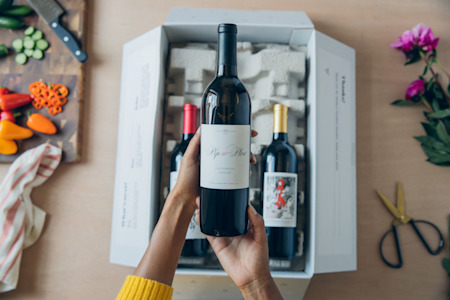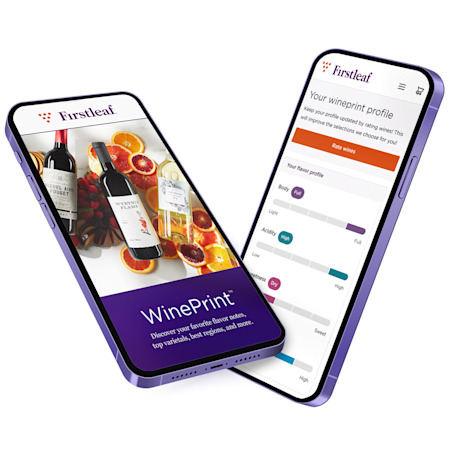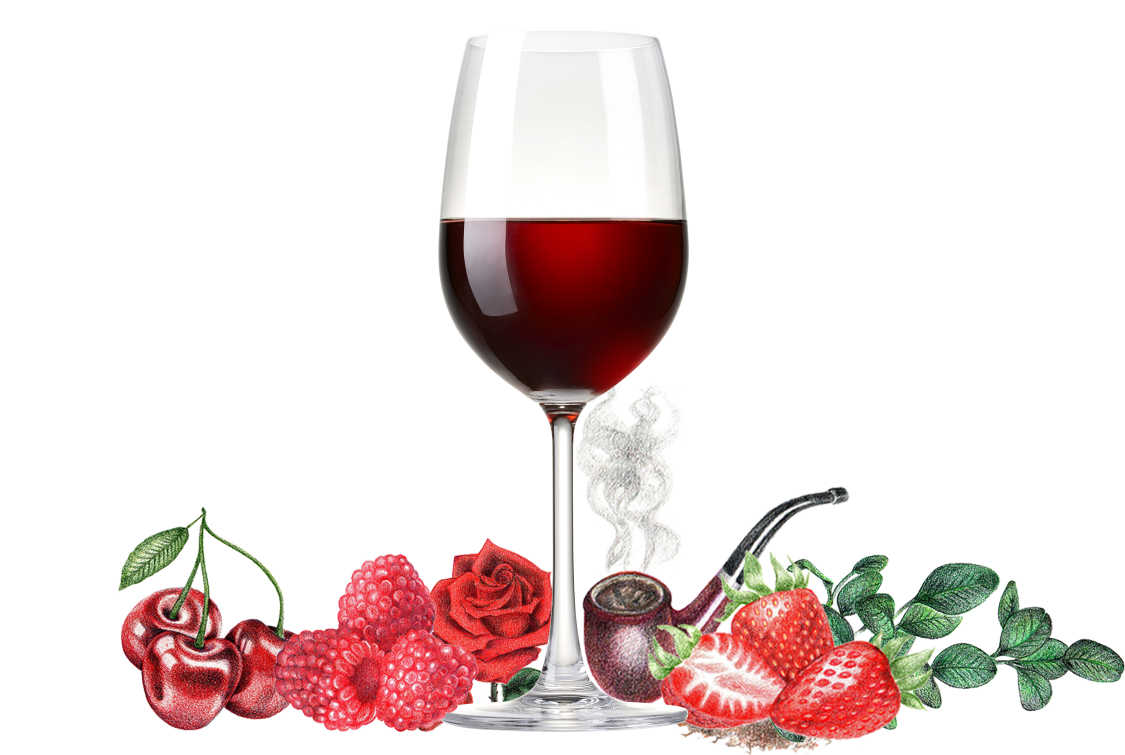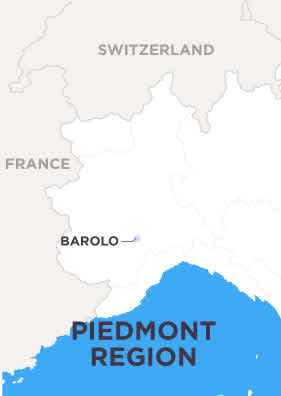Barolo Wine
Here's everything you need to know about Barolo wine, the Italian red wine once dubbed "the wine of Kings, the King of wines"
Barolo wine is an appellation located in northwestern Italy, in the wine region of Piedmont (or Piemonte in Italian), which sits at the foot of the western Alps. The red wines that hail from here are incredibly long-lived, mostly due to their hefty structure. In fact, young Barolo wine is often too tannic to drink upon release, and needs years and sometimes decades to mellow and live up to its full potential. Fear not, these wines are worth the wait. Here's everything you need to know about the red wine once dubbed "the wine of Kings, the King of wines."

Sign up for the Club Today
Discover exceptional wines from all over the world all delivered to your doorstep. Sign up with Firstleaf Wine subscription and get wines that you'll love. Start now by taking our Wine Quiz!
Take Our QuizIN THIS ARTICLE:
Barolo Wine Grape Varieties and Flavor Profiles
Barolo wines are always red, and are made exclusively from the Nebbiolo grape. It's a variety with very thick skins, which results in high levels of tannins in the final wines. The Nebbiolo grape is also late-ripening, so it needs large amounts of sunshine to ripen fully. The hills of Piedmont provide just that, particularly in its south- and southwest-facing vineyards.
Barolo wine flavor profile
Nebbiolo wine is medium- to full-bodied and, despite its pronounced tannins, quite light in color, like a garnet or brick red. Its high acidity bolsters its structure even more which, again, is what makes these red wines so ageworthy. Barolo leans toward red fruit, such as cherry, strawberry, raspberry, red currant and red plum, complemented by floral and herbal details, like rose, violet, eucalyptus, tobacco and licorice. As it ages, Barolo will lose some of its primary fruit and take on tertiary notes of earth, leather, tar, mushroom, dried or gamey meat, and even truffles (the latter of which also happens to be an excellent wine food pairing).
For Nebbiolo-based wines that are a little more approachable in their youth, and that generally carry a slightly lower price tag, pick up a Barbaresco, a neighbor in the Piedmont region of northern Italy. You can also try the lauded Brunello di Montalcino for a similar ageworthy red wine, which is based on the Sangiovese grape and is from the region of Tuscany, farther south.
Barolo appellation and terroir
Like all Italian wine, Barolo wine falls into the country's tiered appellation system. It carries the highest classification level: Denominazione di Origine Controllata e Garantita (DOCG). According to DOCG regulations, Barolo must be aged at least 38 months, including 18 months in oak. Wines labeled Barolo Riserva have spent at least 62 months aging, with 36 months in oak. While this seems like a lot of time, the wines definitely need it for their tannins to settle down.
Barolo DOCG vineyards are located in the Langhe hills on steep slopes and at relatively high elevations, between 800 and 1,500 feet above sea level. The Tanaro River flows through the region, dividing it into two valleys: the Serralunga Valley to the east and the Central Valley to the west. This is also known as the Barolo Zone.
The region enjoys a continental climate; winters are cool, but the weather is overall quite moderate to warm, with summers and falls that last a long time. A moderating fog (or nebbia—where the word Nebbiolo comes from) rolls through the hills. The soils are mostly sandstone and calcareous marl, with some clay, but this varies by commune.
Barolo vineyards can be found in 11 different communes: Barolo, Castiglione Falletto, Cherasco, Diano d'Alba, Grinzane Cavour, La Morra, Monforte d'Alba, Novello, Roddi, Serralunga d'Alba and Verduno. However, 90% of Barolo production actually comes from only five of these: Barolo, Castiglione Falletto, La Morra, Monforte d'Alba and Serralunga d'Alba.
Within these communes are various crus that, while not officially written into the DOCG system, are widely considered to be the most prized terroirs of Barolo. Wondering what is a crus? Wine Enthusiast says, “Cru translates to ‘growth.’ More precisely, it references a great or superior growing site or vineyard, a concept linked to the French notion of terroir. Soil, climate, altitude, aspect and the right variety create a synergy recognized as a cru.” This is often applied to French wine, but it’s true for Italian wines like Barolo too!
Well-known Italian crus you should make a note of include Cannubi in the Barolo commune; Rocche in La Morra; Brunate in both Barolo and La Morra; Monprivato in Castiglione Falletto; Bussia and Ginestra in Monforte d'Alba; and Lazzarito in Serralunga d'Alba.
Back in the day, vintners in Barolo made blends of various crus. However, in the 1960s and 1970s, there was a rise in single-vineyard bottlings as expressions of distinct sites. These are sold with the name of the cru on the label, often accompanied by the word "vigna." Producers typically make a regular Barolo, a blend of vineyards or communes, as an entry to their range, as well as cru-specific wines, in lesser quantities and at higher prices. (We prefer to bring you world-class wine, at lower prices. Check out more information about Firstleaf costs here.)
While these crus are not officially codified under the DOCG system, the Barolo Consorzio drew up a list of vineyard areas called Menzioni Geografiche Aggiuntive (MGA), which they unveiled in 2010 after years of work. These designate which vineyards can be named on a wine's label, but it is not a hierarchical system denoting quality.
It's in these cru wines that you'll typically notice differences in terroir, and particularly in soil. The vineyards in the Barolo and La Morra communes are made up of Tortonian soil, which is a compact and fertile type of calcareous marl. These wines are generally on the more elegant and fruitier side of the spectrum, often approachable earlier in their youth. (learn how to store wine here) On the other hand, Castiglione Falletto, Monforte d'Alba and Serralunga d'Alba vineyards are grown in less compact Helvetian soils, which include more limestone and sandstone. This results in Barolo wines that are fuller, more structured and need more time in the bottle to fully mellow out.
Barolo winemakers and winemaking techniques
While terroir has a lot to do with the varying styles of Barolo wine, so does the winemaking technique. In case you missed it: Barolo is so high in acidity and tannins that most can take at least 10 years to evolve into the optimal wine drinking experience. Some Barolo wine producers decided this didn't necessarily have to be the case.
Starting in the late 1970s and early 1980s, a group of young winemakers dubbed the "Barolo Boys" began experimenting with the winemaking status quo. Traditionally, Barolo is made by making grapes go through long macerations and fermentation times, as well as extended periods of aging in large and neutral Slavonian oak casks (called botti). The long macerations increase the extraction of skin to juice, giving the final wines more color and, especially, more tannins. Many old-guard producers believe this is what makes Barolo great and long-lived, but on the flip side, it's also what makes Barolo difficult to drink in its youth.
The so-called Barolo Boys decided to tweak the formula. They employed shorter macerations, fermentations and aging times. And, most important, they decided to forego the neutral casks and opted for smaller new oak barriques. This, to traditionalists, was heresy. To modernists, it meant styles that emphasize fruit and softer tannins, meaning the wines are much more approachable in their earlier stages of development.
This debate between traditionalists and modernists got so bitter, the term "Barolo Wars" was coined to describe it. In fact, many traditionalists say these modern wines cannot even be recognized as real, great Barolo. However, over time, the Barolo Wars have settled down and many producers have landed on a style that's somewhere in the middle of this, with careful attention to the balance of extraction and oak use.
Producers known as traditionalists include Giacomo Conterno, Bruno Giacosa, Giuseppe Mascarello and Giuseppe Rinaldi. The modernists are Elio Altare, Angelo Gaja, Paolo Scavino and Renato Ratti, among many others.
Ready to try Barolo wine and other Italian red wines?
Then it’s time to order some Italian red wines from Firstleaf, America’s most personalized wine club and subscription service! We take the guesswork out of wine selection, but leave all the adventure, delivering world-class wine tailored to your taste. We sample over 10,000 wines a year (including Barolo, Pinot Noir, Cabernet Sauvignon and more), selecting only the finest bottles. Then we curate each box to your unique preferences so you can discover new favorites, not just once, but over and over again.
IN THIS ARTICLE

WinePrint™ by Firstleaf
Are you looking to learn more about your wine preferences? Check out our Wine Print for an in-depth look at your personal tasting profile. Discover your favorite wines, varietals, regions, and tasting notes and get personalized recommendations wherever you are.
Learn More
